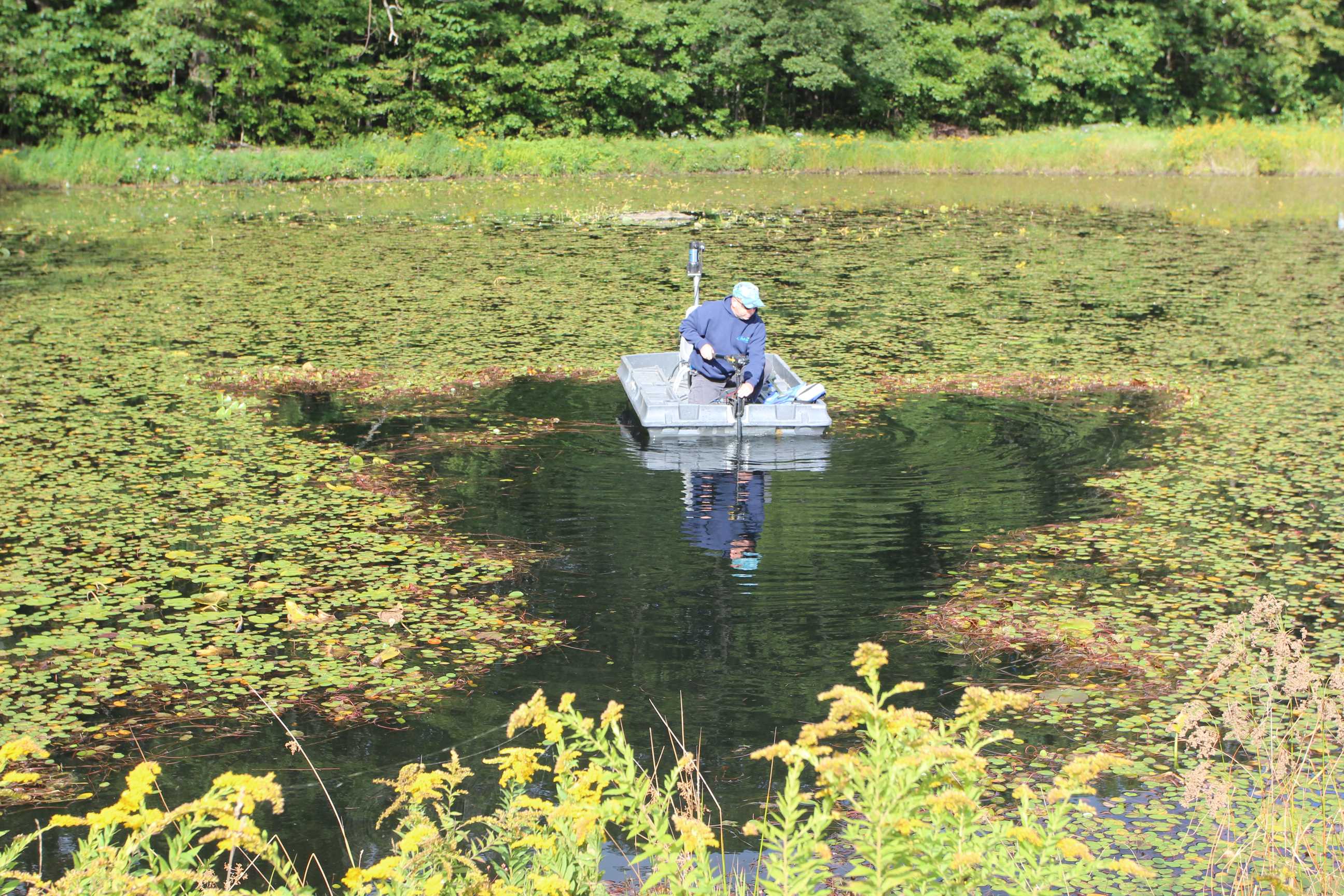Watershield, also known as water shield, is a common aquatic plant that can quickly take over ponds and water gardens if left unchecked. Its rapid growth can hinder the health of the aquatic ecosystem and reduce the aesthetic appeal of the water feature. Fortunately, there are several effective methods to control and eliminate watershield in ponds. In this article, we will explore these methods in detail.
1. Manual Removal
One of the simplest ways to control watershield in ponds is through manual removal. Using a rake or a pond skimmer, you can physically remove the plants from the water surface. It is essential to remove the entire plant, including the roots, to prevent regrowth. Regularly skimming the surface of the pond can help prevent watershield from spreading.
2. Biological Control
Introducing natural predators of watershield can be an effective method of control. Grass carp, a species of fish known for feeding on aquatic plants, can help reduce the population of watershield in ponds. However, it is essential to consider the impact of introducing new species to the ecosystem and ensure that the fish do not cause harm to other aquatic life.
3. Chemical Control
Herbicides can be used to control watershield in ponds, but it is crucial to use them responsibly and according to the manufacturer’s instructions. Selective herbicides that target aquatic plants while being safe for fish and other aquatic life are recommended. Always follow the recommended dosage and application guidelines to minimize the environmental impact.
4. Physical Barriers
Installing physical barriers, such as pond netting or floating barriers, can help prevent watershield from spreading across the pond. These barriers can block sunlight and nutrients, inhibiting the growth of the plants. Regularly inspect and maintain the barriers to ensure their effectiveness in controlling watershield.
5. Water Circulation
Poor water circulation can create stagnant areas where watershield thrives. Installing aeration systems or water pumps can help improve water circulation and oxygen levels in the pond, making it less conducive for the growth of aquatic plants like watershield. Proper water circulation can also help in maintaining a healthy aquatic ecosystem.
6. Nutrient Management
Watershield thrives in nutrient-rich environments. Managing the nutrient levels in the pond can help control the growth of watershield. Avoid overfeeding fish or adding excessive fertilizers, as this can lead to an excess of nutrients in the water, promoting the growth of aquatic plants. Regularly test the water quality and adjust nutrient levels accordingly.

Credit: weedersdigest.com

Credit: www.whatpond.com
7. Shade Plants
Introducing shade plants around the pond can help reduce sunlight reaching the water surface, limiting the growth of watershield. Plants like water lilies or water hyacinths can provide shade and competition for resources, helping to control the spread of watershield. Be mindful of the planting density to prevent overcrowding.
8. Regular Maintenance
Consistent and proactive pond maintenance is crucial in preventing the overgrowth of watershield. Regularly inspect the pond for signs of watershield growth and take immediate action to control it. Routine cleaning, pruning, and monitoring of water quality can help maintain a balanced and healthy pond ecosystem.
Conclusion
Controlling watershield in ponds requires a combination of manual, biological, chemical, and environmental management strategies. By implementing these methods and maintaining a proactive approach to pond maintenance, you can effectively manage and eliminate watershield to preserve the health and beauty of your aquatic environment. Remember to always consider the impact of any control method on the overall ecosystem and choose sustainable practices for long-term pond health.



